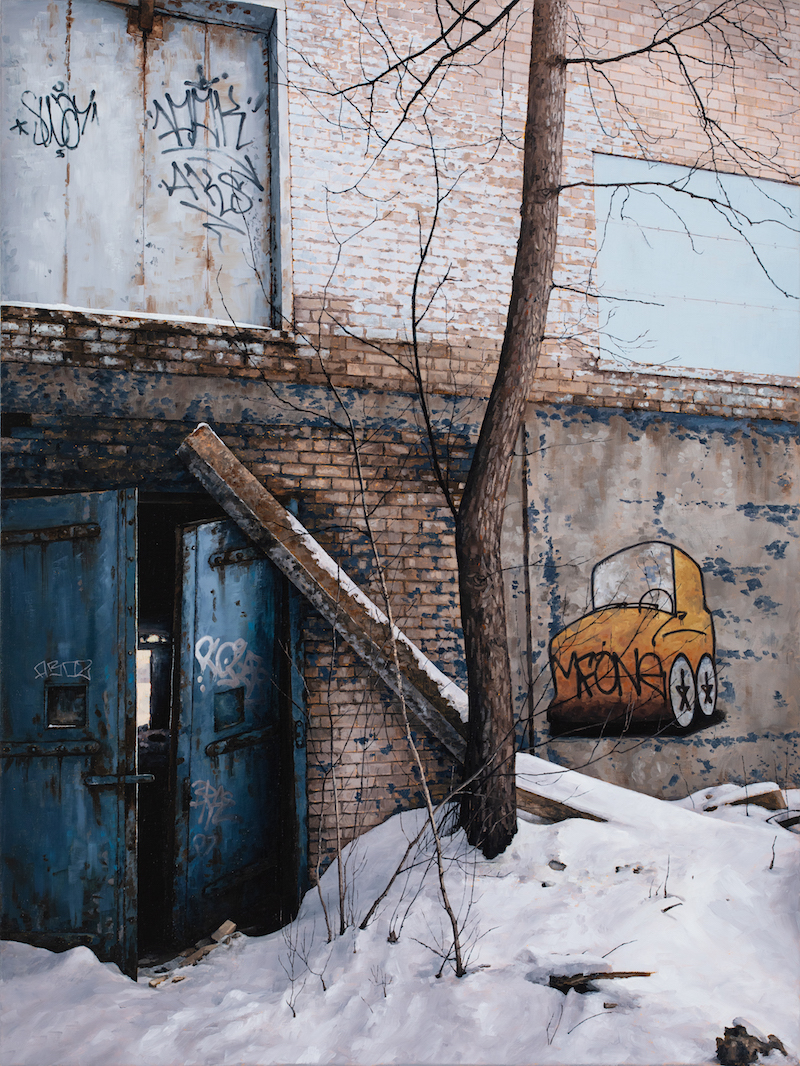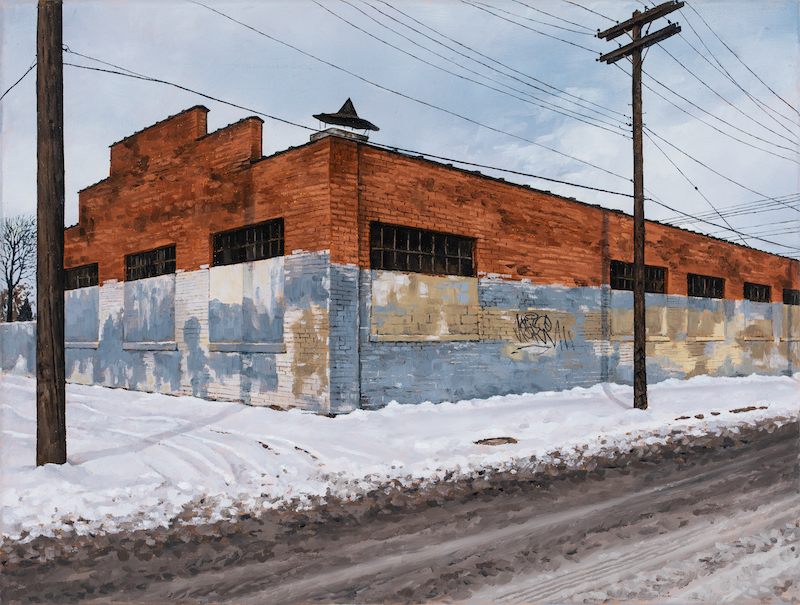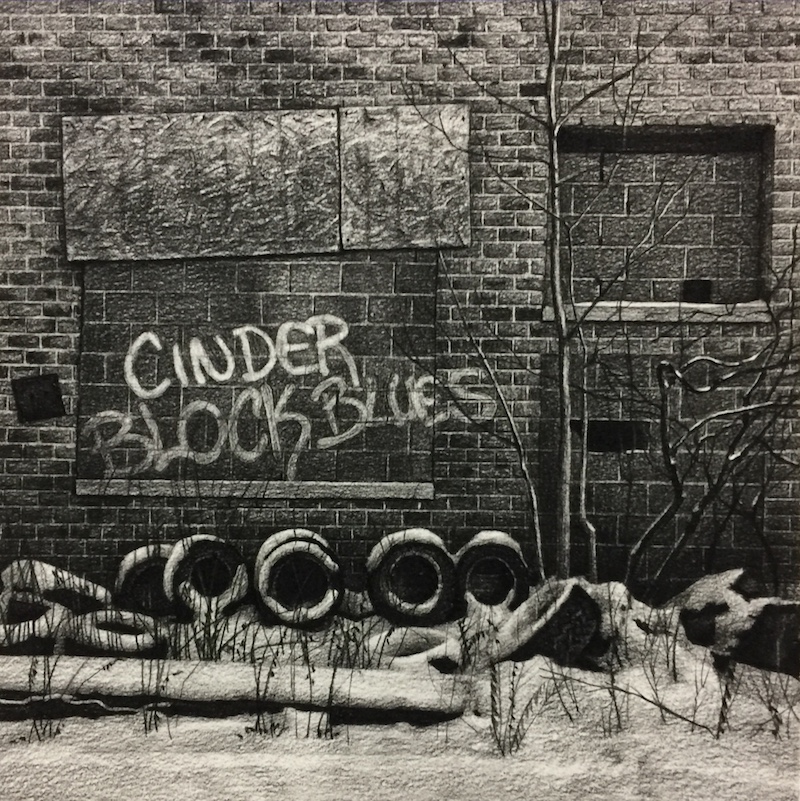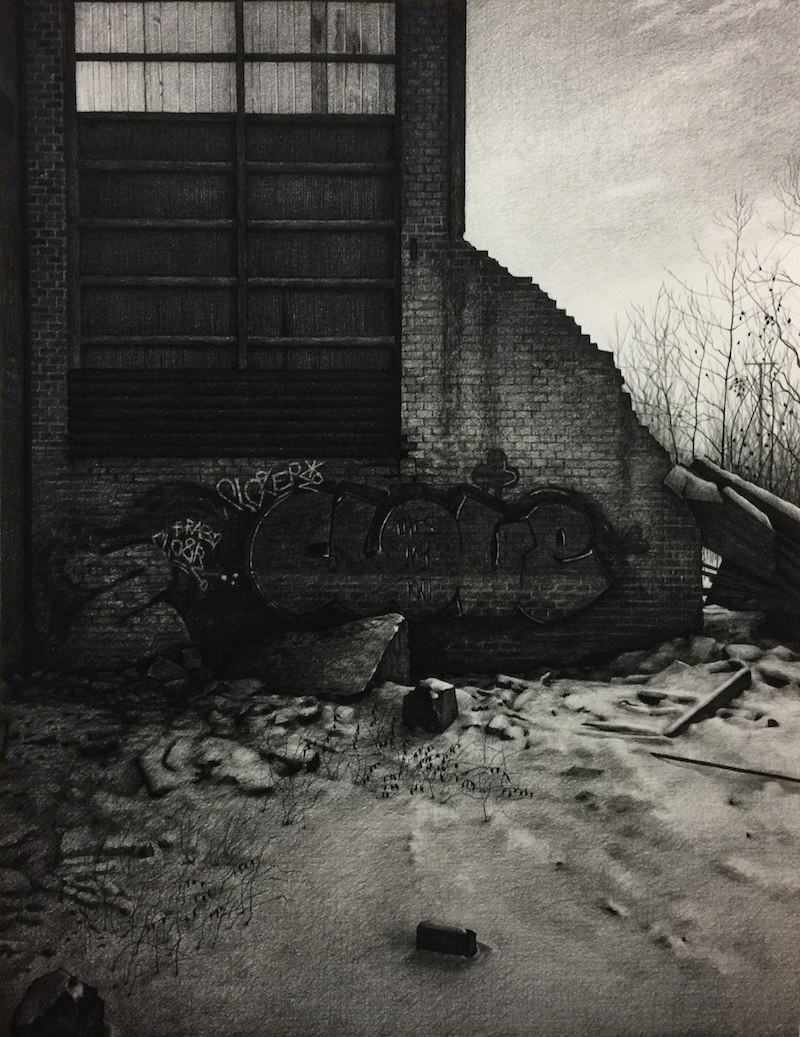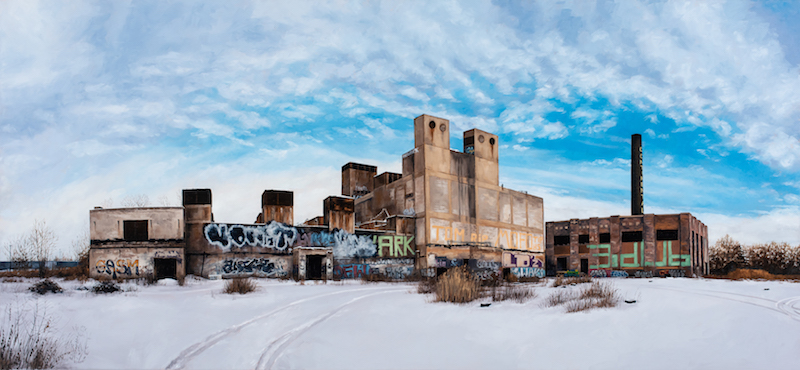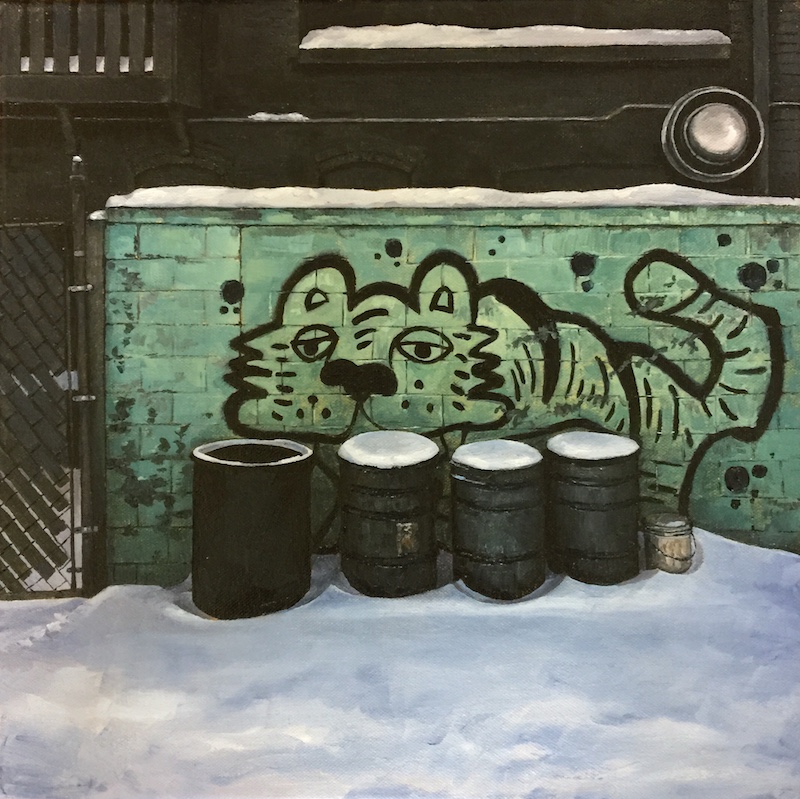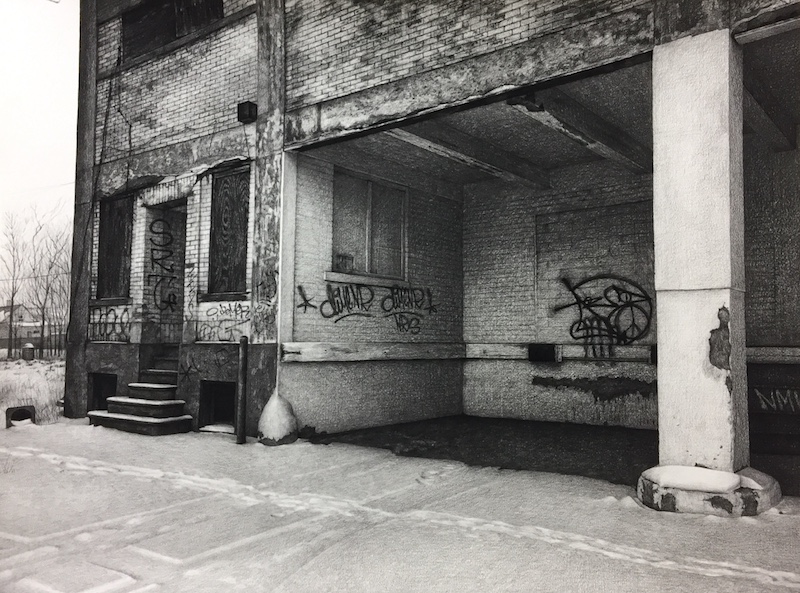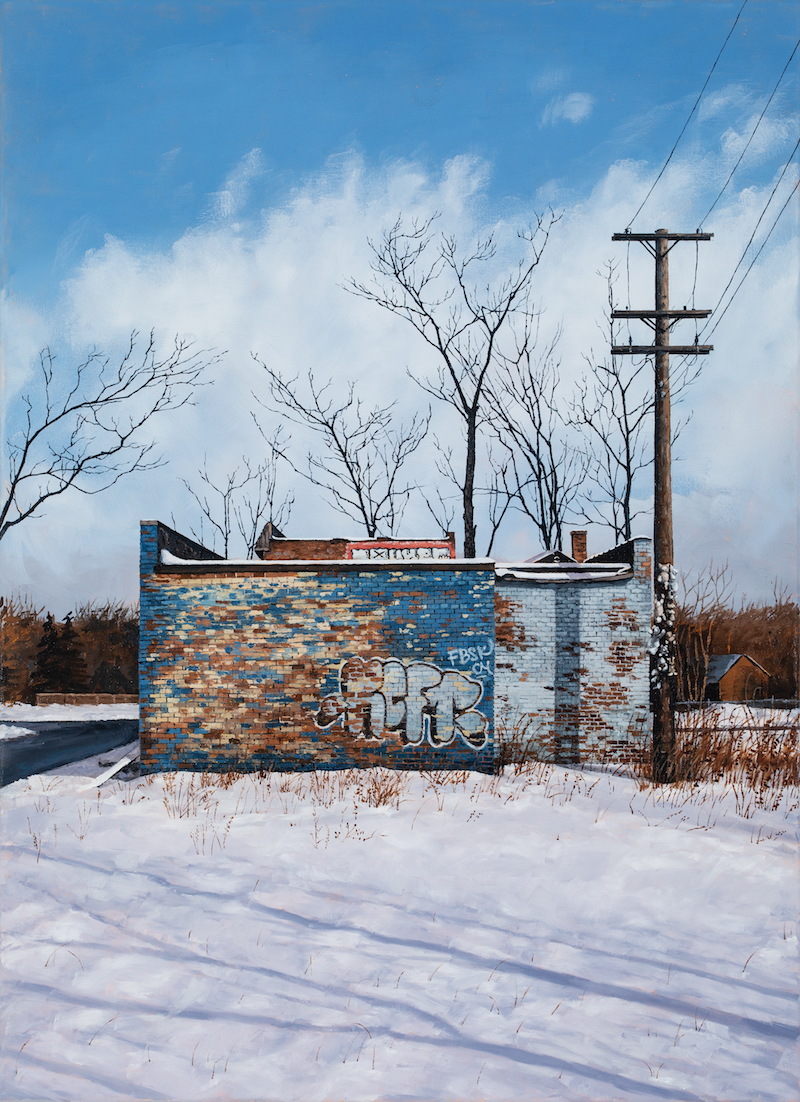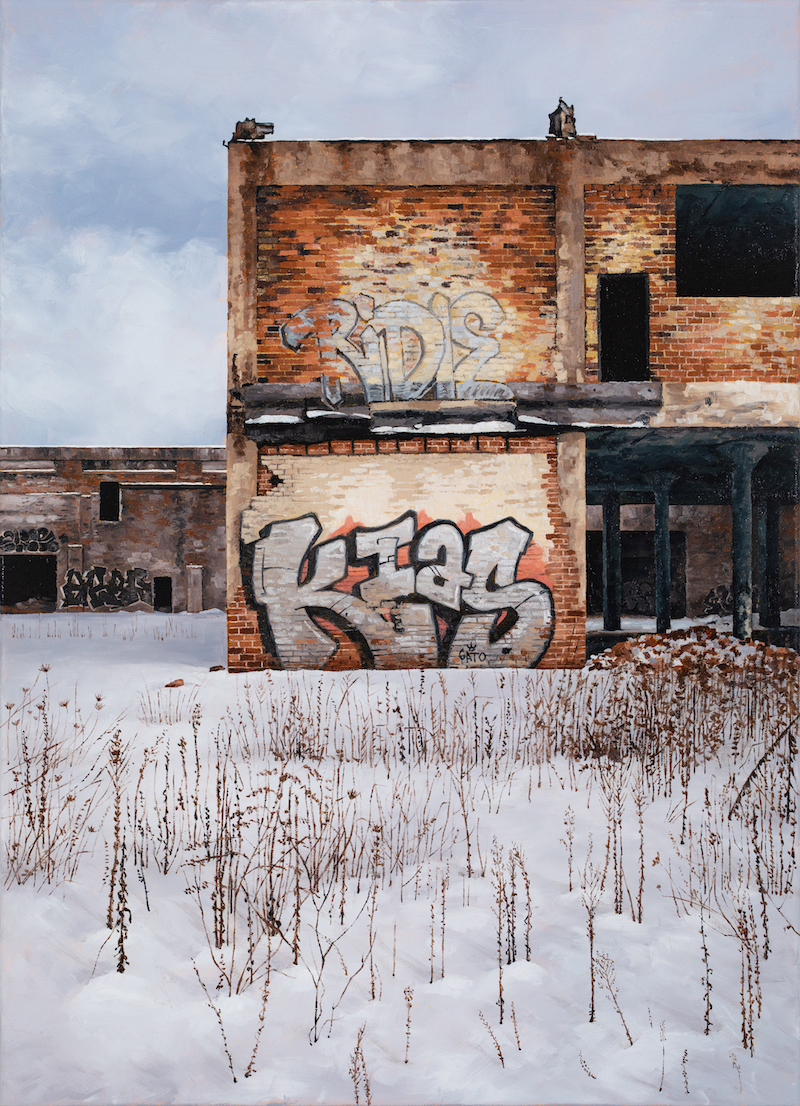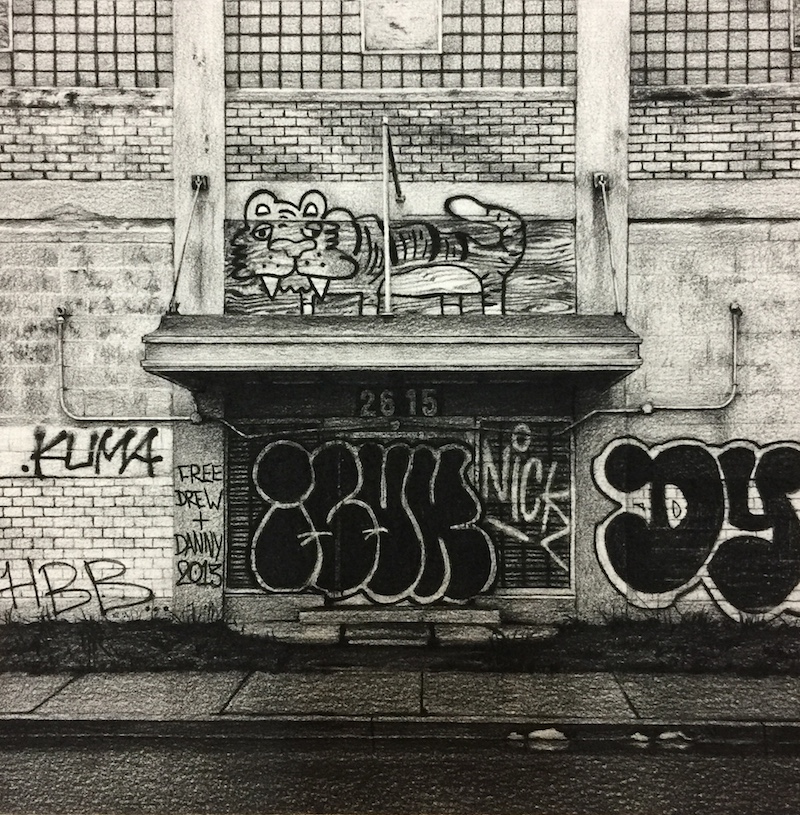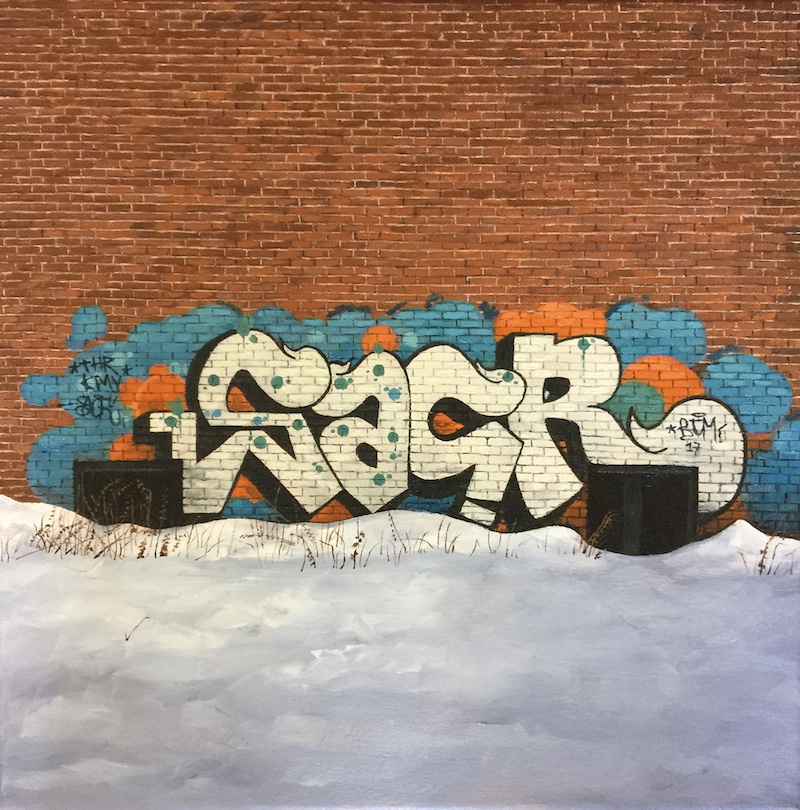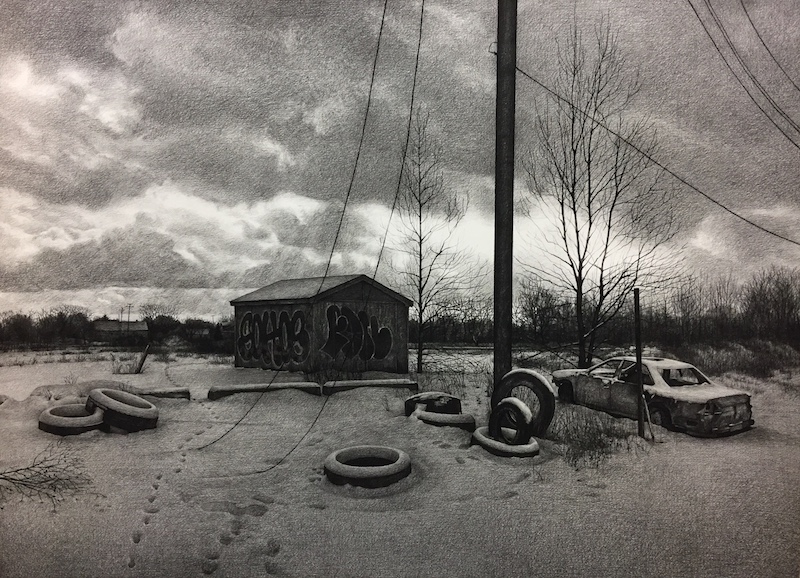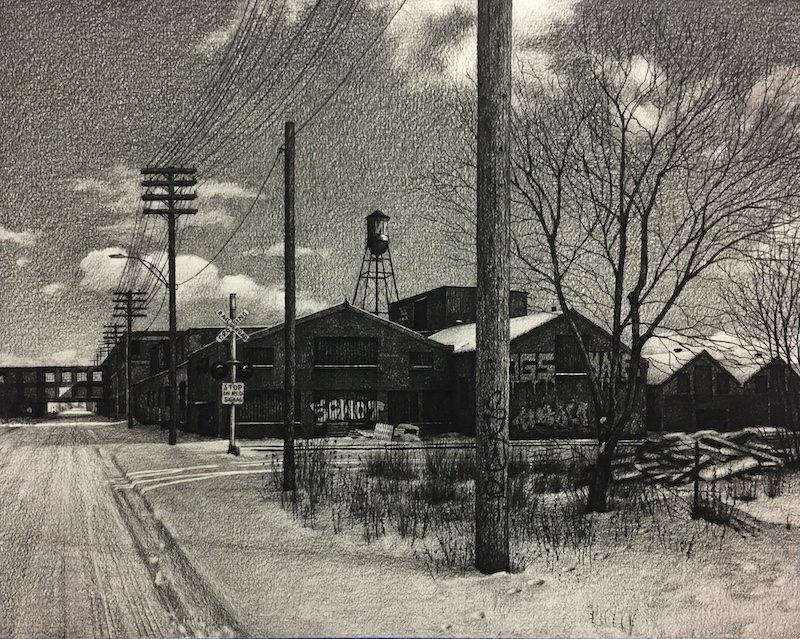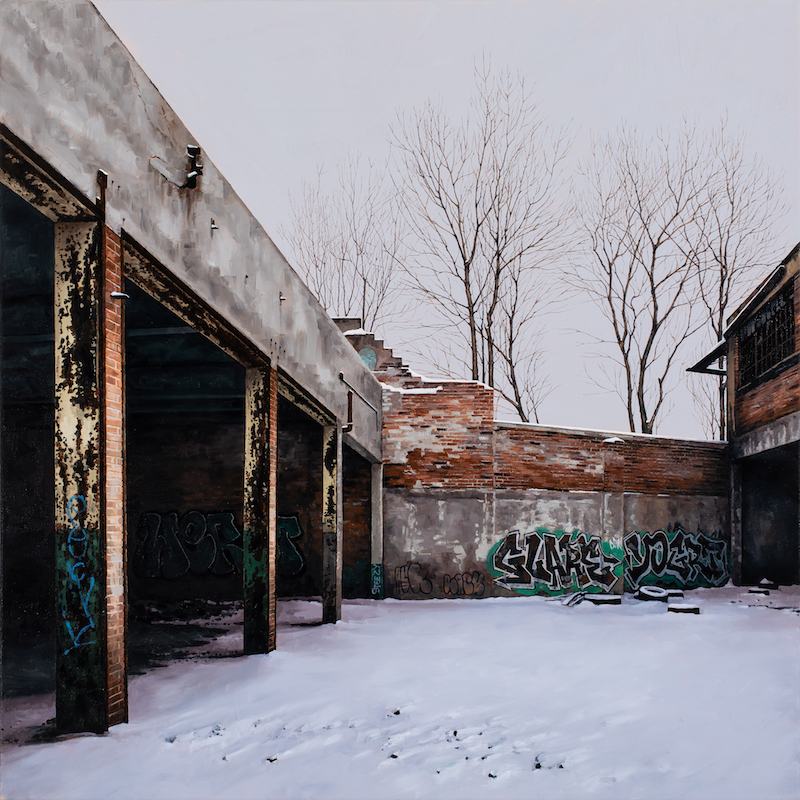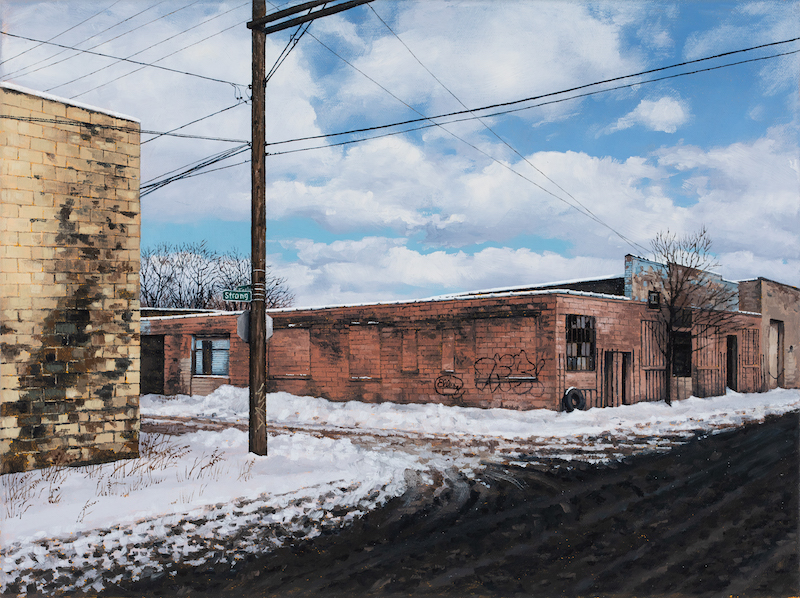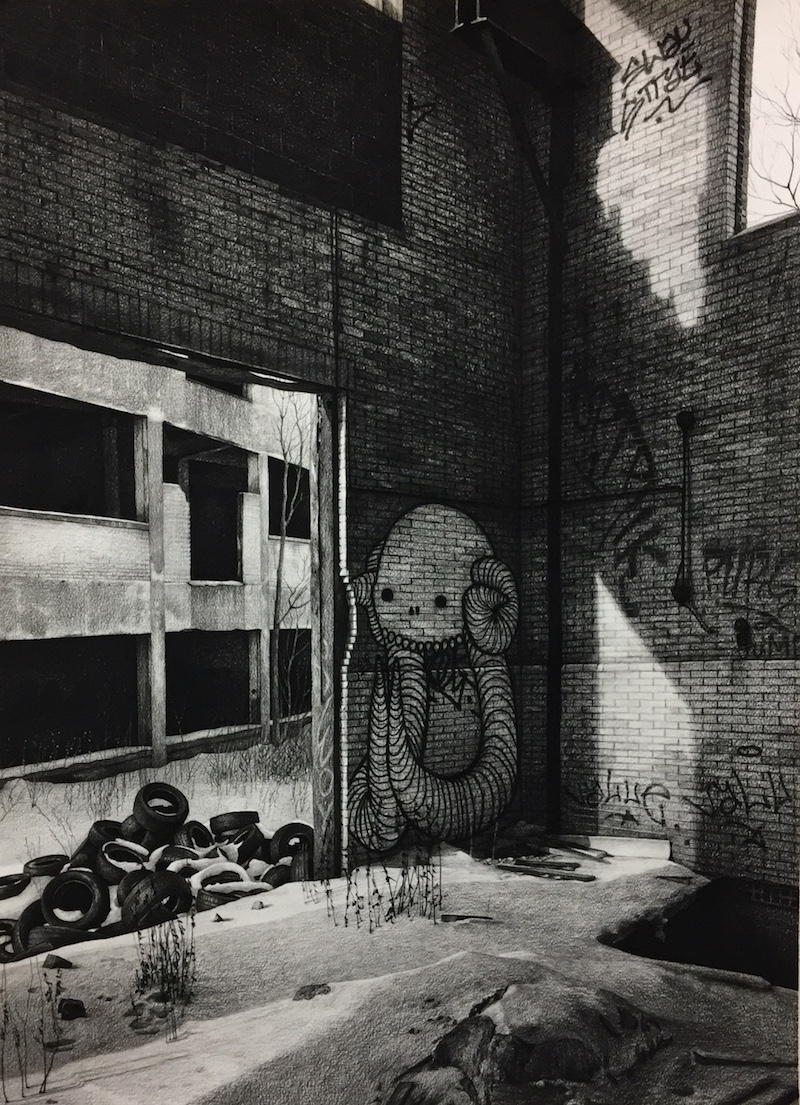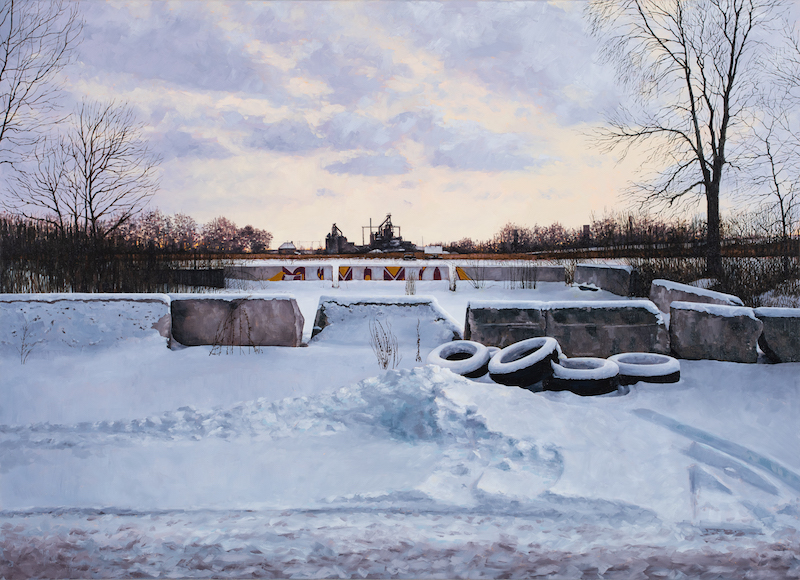There has always been a fascination with the empty roads and vast scenes of America with painters. This idea of the abandoned, the left-behind, or the quiet turmoil of suburbia being on the edge of deserted makes for not only beautiful works but fascinating bits of history to look back on. We just posted an essay by Pat Perry about painting and his works of abandoned America, and today, we look at the beautiful works of Portland-based Stephanie Buer, works she made after spending time in Detroit. Her works combine realistic landscapes of discarded objects, beautiful scenery, graffiti and the true sense of "what was" in America. Her new show, Wild Abandon, featruing photorealistic works in oil and charcoal works on paper, opens at Thinkspace on January 5, 2019.
From the gallery: The invasive quality of quiet that shapes Buer's contemplative works is unique; they are arresting in that they abruptly apprehend the passage of time. Her paintings still a moment in the temporal lifespan of these abandoned structures, some in more advanced states of deterioration than others. They exist on the outskirts of time and space, divested of use and function. By capturing the relics of urban development exhausted or gone wrong, her works reveal a fascination with the cyclical life of these structures, and their fate once returned to the lawlessness of margins. Overcome by nature, vandals, entropy, and the socially peripheral, a quiet haunting consumes these buildings with the spectral implication of loss and extinction their desertedness implies.
There is, however, redemptive peace and beauty found amongst Buer's contemporary ruins; in the eventual reappearance of nature where once it was cleared and in the continuity of a kind of rebel growth in spite of ultimate desertion or human intent. Mysterious in the anarchic freedom their marginal existences imply, these spaces represent a kind of exemption from the restraint of the colonized city. Something elastic and free, while simultaneously vulnerable and uncertain, makes the condemned structure strangely more akin to human life. An evocative moodiness persists in Buer's poetic compositional choices, her immersive attention to detail, and her emotive capture of time and place. The works are lovingly, and even painfully, precise in their lush detail and arrested stillness.

